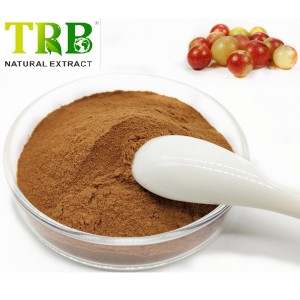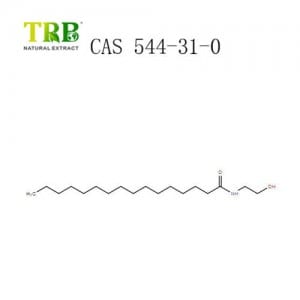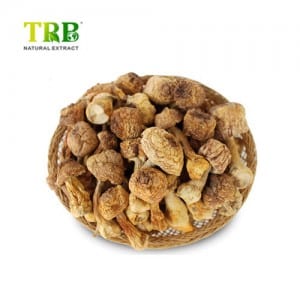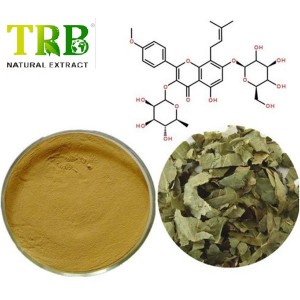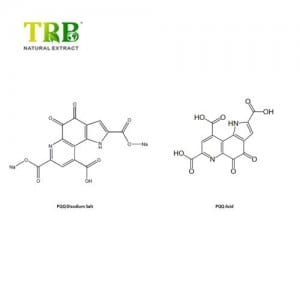We purpose to understand high quality disfigurement with the output and supply the top service to domestic and overseas buyers wholeheartedly for Stearoylethanolamide (SEA), To find out more about what we could do for you personally, call us anytime. We look forward to setting up good and long-term company interactions along with you.
We purpose to understand high quality disfigurement with the output and supply the top service to domestic and overseas buyers wholeheartedly for China Health Care Products and Herb Extract, With the aim of “compete with good quality and develop with creativity” and the service principle of “take customers’ demand as orientation”, we are going to earnestly present qualified products and good service for domestic and international customers.
| Product name | Stearoylethanolamide (SEA) |
| Synonyms | N-stearoyl ethanolamine,SEA, N-(2-hydroxyethyl)-octadecanamide,SMEA, Stearic MEA, N-Stearoylethanolamine, Stearic acid monoethanolamine, N-(2-Hydroxyethyl)stearamine, Stearamide MEA, Monoethanolamine stearic acid amide, Stearamide monoethanolamide, Ceramid;Stearic Acid Ethanolamide Stearoylethanolamide |
| CAS number | 111-57-9 |
| Molecular formula | C20H41NO2 |
| Molecualr weight | 327.545 |
| Melting point | 97-100 C |
| Boiling point | >300C |
| Specifications/assay | ≥98% |
| Appearance/color | White to Off-white Fine crystal powder |
What is Stearoylethanolamide?
Stearoylethanolamide (SEA) is a fully saturated C18 N-acylethanolamines. N-acylethanolamines (NAEs), collectively called anandamides, constitute a class of lipid compounds. NAEs are naturally present in both animal and plant membranes as constituents of the membrane-bound phospholipid, N-acylphosphatidylethanolamine (NAPE).
Stearoylethanolamide (SEA) is an endocannabinoid neurotransmitter. It is present in human, rat, and mouse brain, its amounts comparable to those of the endocannabinoid anandamide (arachidonoylethanolamide, AEA).
SEA is the most abundant of several fatty acid ethanolamines produced by the PLD hydrolysis of phospholipids from mouse neuroblastoma cell membrane.

Some findings on Stearoylethanolamide
Anorexic effect of PEA and SEA in mice
A strong anorexia effect was observed in mice after 25 mg/kg administration of stearoylethanolamide (SEA, C18:0 ethanolamide). And this inhibits an hour food consumption. At the same dose, palmitoylethanolamide (PEA, C16:0 ethanolamide) is less useful than SEA, but it is still effective in reducing food intake.
Visible acute dose-dependent anorexia effect in mice
The feeding behavioral responses of starved mice was evaluated after given SEA at doses of 3. 10 and 25 mg/kg, respectively.
Compared with the vehicle-treated mice:
3mg/kg SEA—doesn’t have an obvious effect on food consumption.
10mg/kg and 25 mg/kg SEA—-significantly reduced food intake by one hour.
Besides, the serum leptin levels and other biochemical parameters after two hours of taking the SEA are not different from the vehicle-treated mice.

Decrease the expression of stearoyl-CoA desaturase-1(SCD-1) mRNA in liver
Starved mice were treated with oral administration of SEA (25 mg/kg) or vehicle. Real-time RT-PCR quantification of SCD-1and PPARs after two hours.
Compared with the vehicle-treated mice:
Orally administered 25 mg/kg SEA significantly decreases the expression of SCD-1 mRNA in the liver.
While the PPARs (PPARα, PPARβ, and PPARγ) don’t have apparent changes.

SEA mediates apoptosis of colorectal cancer cells by inhibiting the expression of SCD-1 by promoting ceramide synthesis
SCD can inhibit the proliferation of tumor cells and induce apoptosis of various tumors.
In vitro studies of colorectal cancer cells have shown that inhibition of SCD-1 activity promotes apoptosis due to mitochondrial dysfunction, upregulation of reactive oxygen species (ROS), changes in mitochondrial transmembrane potential, and translocation of mitochondrial protein cytochrome C.
Function and benefits of SEA
Lose weight
Stearyl ethanolamide is a natural appetite suppressant for safe and effective weight loss. It can inhibit the expression of stearoyl-CoA desaturase-1(SCD-1) mRNA.
SCD-1 is an iron-containing enzyme that catalyzes a rate-limiting enzyme in the biosynthesis of monounsaturated fats.
SCD-1 mRNA is expressed highly in white adipose, brown adipose tissue, and the gland of Harder under non-fasting conditions. And the expression of SCD-1 in liver tissue and heart increased significantly under a high carbohydrate diet.
Monounsaturated fatty acids are the products of SCD-1 catalyzed reactions. Monounsaturated fatty acids can be used as substrates for the synthesis of various kinds of lipids, including phospholipids and triglycerides.
Thus, the decrease of SCD-1 is beneficial to the increase of fatty acid oxidation and the reduction of fat production in skeletal muscle and liver.

Help to treat metabolic diseases
SCD-1 is an essential point of metabolic control. Inhibition of its expression can promote the treatment of many metabolic diseases
SEA may help reduce adiposity, increase insulin sensitivity and resist the diet-induced obesity through inhibiting the expression of SCD-1.
Promotes apoptosis of cancer cells
SEA can promote the apoptosis of cancer cells by inhibiting the expression of stearoyl-CoA desaturase-1(SCD-1) mRNA.
SCD1 is essential for lipid biosynthesis during the mitotic cell cycle; it provides new phospholipids for the biogenesis of cell membranes.
Over the past decade, SCD-1 has been extensively studied in cancer research and is considered as a new molecular target of broad-spectrum cancer molecular target.
A decrease of SCD-1 activity and mRNA expression damaged the formation of lipid in the cell membrane with the reduction of fatty acid biosynthesis and desaturation, which lead to cease tumor cell proliferation and induce cell apoptosis.
Anti-inflammatory and anti-allergic
Stearyl ethanolamide has a significant inhibitory effect on auricle edema in adult mice induced by skin allergy. It is proved that stearyl ethanolamide (SEA) has anti-inflammatory properties.
The endogenous effect of stearoyl ethanolamide has not been fully elucidated. It does not combine with cannabinoid receptors, but it can affect cellular signals and trigger biological effects potentially through targets other than cannabinoid receptors. In 2001, some mouse research found that stearyl ethanolamide (SEA) acts on the ERK MAP kinase and then irritates AP-1 activity in mouse epidermal JB6 P+ cells. Although these pathways are not clear, stearoyl ethanolamide (SEA) has been found to strengthen AP-1 transcriptional activity mediated through the extracellular-signed-regulated protein kinase (ERK) mitogen-activated protein kinase (MAP kinase) pathway.
PEA VS OEA VS SEA
| Product name | N-Stearoyl ethanolamide (SEA) | N-oleoyl ethanolamide (OEA) | N-Palmitoyl ethanolamide (PEA) |
| CAS number | 111-57-9 | 111-58-0 | 544-31-0 |
| Molecular formula | C20H41NO2 | C20H39NO2 | C18H37NO2 |
| Molecular weight | 327.55 | 325.55 | 299.5 |
| Appearance | Fine crystal | Fine Flake | Fine powder |
| Color | White to Off-white | White to Off white | White to Off white |
N-Palmitoylethanolamide product (PEA, C16:0 ethanolamine) is an endogenous fatty acid amide. It belongs to the class of nuclear transcription factor agonists.
PEA is a natural anti-inflammatory agent and painkiller. PEA is shown to reduce allergic reactions and inflammation in animals
PEA is synthesized and metabolized by different animal cell types and also existed in plants, and it is widely located in various foods including egg yellow, soybeans, and peanuts
N-Oleoylethanolamine (OEA, C18:1 ethanolamine) is a naturally occurring ethanolamide lipid. It is a natural analog of the endogenous cannabinoid anandamide.
OEA has anorexic effects and enables fat breakdown by stimulating PPAR-alpha.
OEA is abundant in dry plant seeds and decreased in the process of seed imbibition.
N-Stearoylethanolamine (SEA C18:0 ethanolamine) is a fully saturated C18 N-acylethanolamine.
SEA can decrease food intake and help lose weight without changing the serum leptin levels and other biochemical parameters. SEA can also promote apoptosis of cancer cells.

To sum up
PEA, OEA, and SEA all of them belong to a family of endogenous lipid mediators—N-acylethanolamines (NAEs). But they show different receptor preferences. Both of PEA and OEA can activate several different receptors and inhibit some ion channels, such as PPAR, vanillin receptor, K (+) channel (Kv4.3, Kv1.5). However, PEA can affect GPR55, vanilloid TRPV1 as well as the cannabinoid CB1 receptor-mediated. OEA can activate GPR119, GLP-1 secretion and inhibit ceramidase. But SEA inhibits the SCD-1 and does not modulate PPAR‐α expression.
Compared with PEA, SEA has very lower water solubility. SEA also endowed with anti-inflammatory activity, but in terms of anti-inflammatory activity, SEA consistently exhibited much lower activity than PEA.
Compared with OEA, SEA inhibits the expression of SCD-1 to increase fatty acid oxidation and decrease fat production. (OEA could activate GPR119 and GLP-1 secretion together with increasing glucose-dependent insulin secretion from the pancreas, OEA could also activate PPARα, beneficial to the lipolysis in adipose tissue.,)
